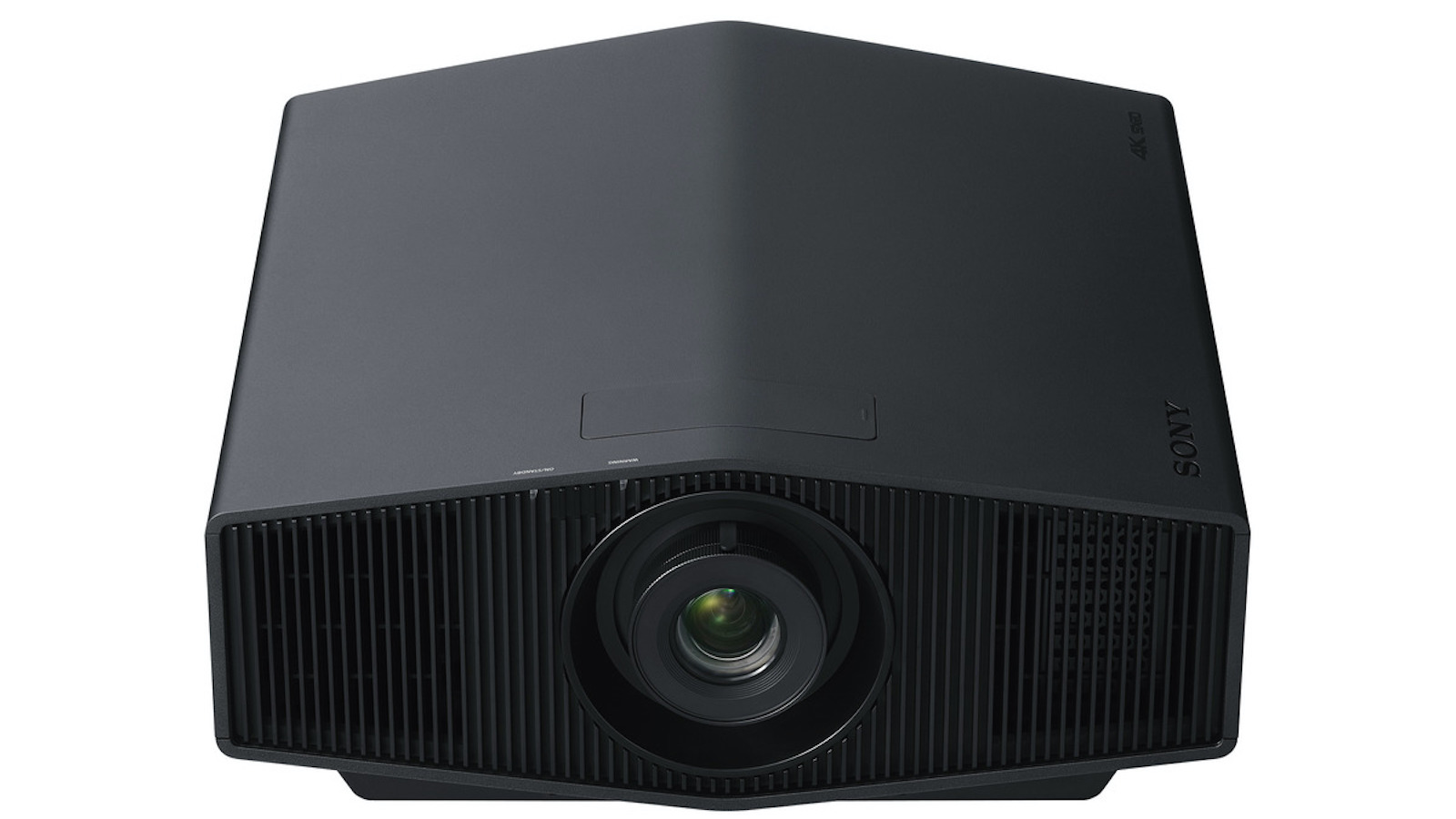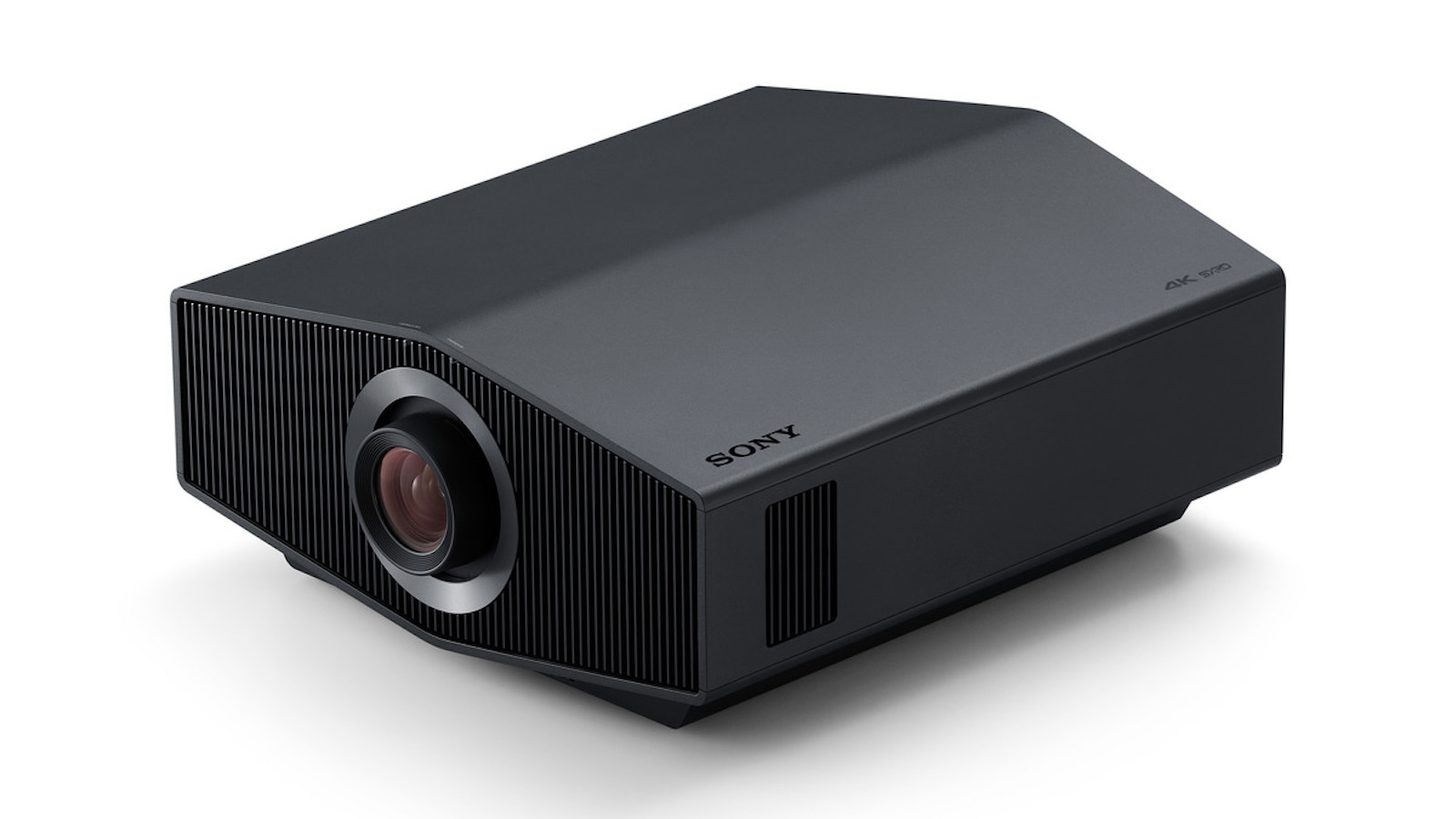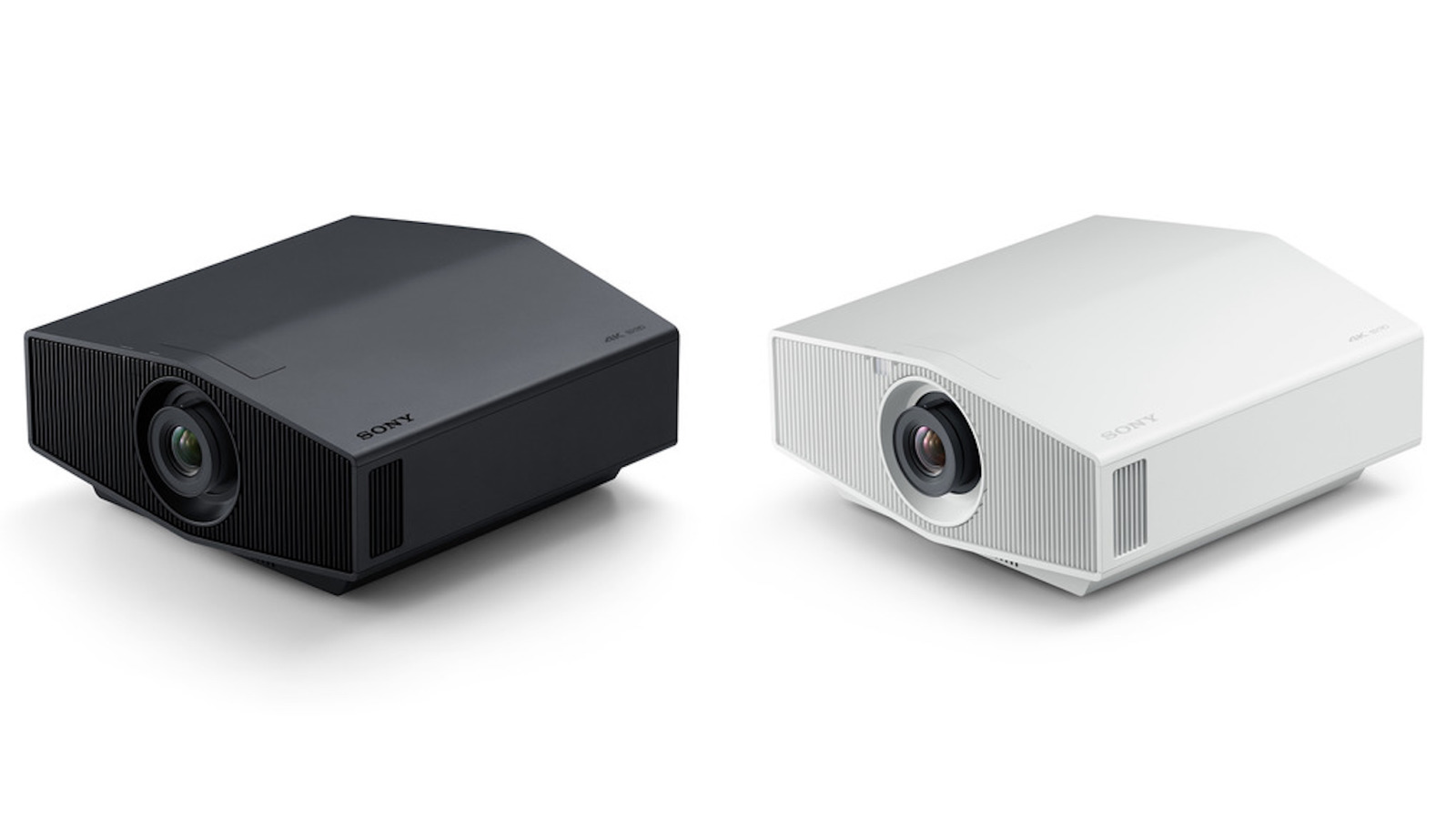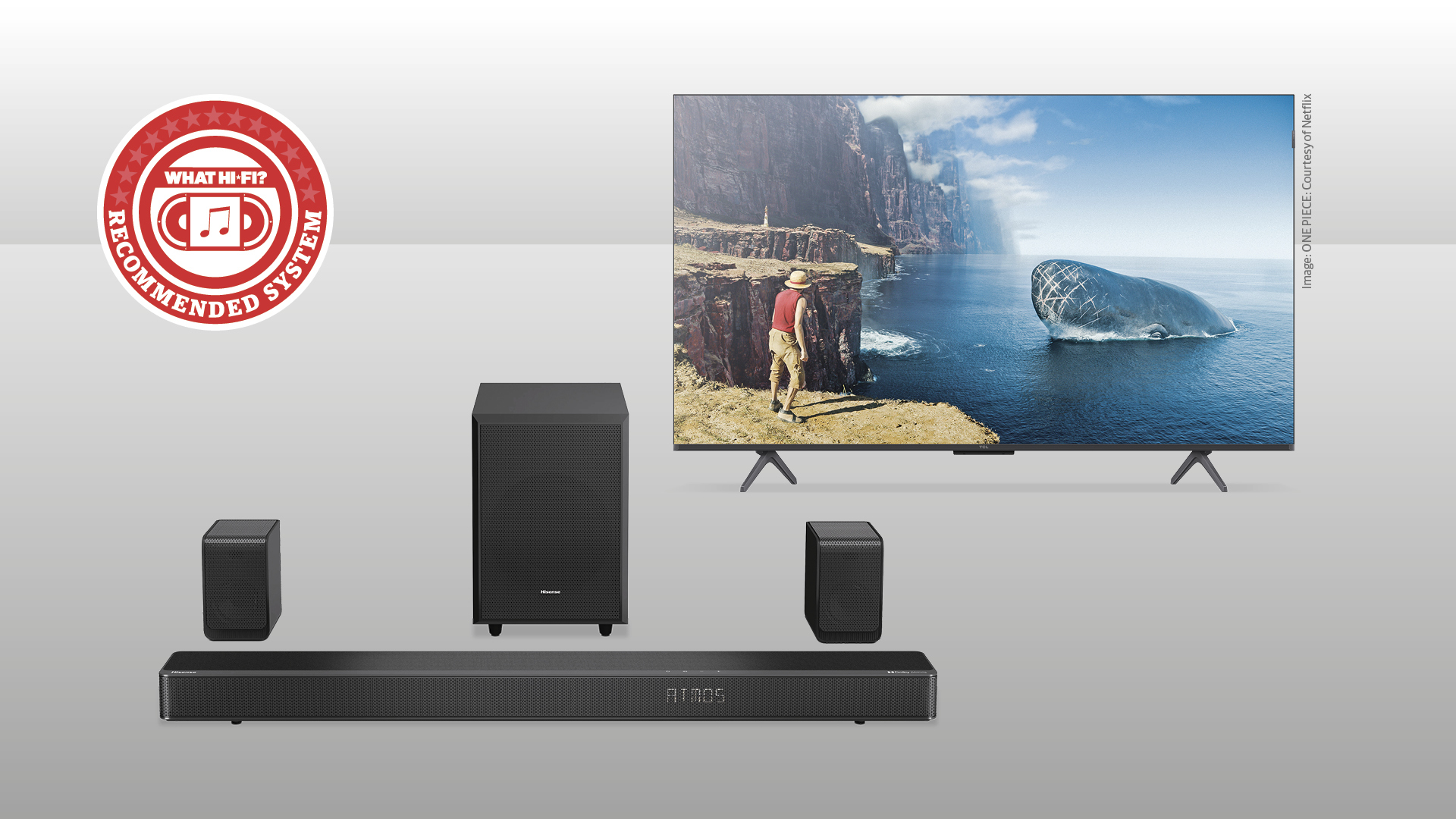Sony unveils duo of ground-breakingly affordable 4K laser projectors
Sony will now sell you a 4K laser projector for just £5999 / $6000 / AU$9999

Sony has unveiled a pair of new home cinema projectors that it claims usher in a new era of more affordable, higher performance ‘true’ 4K laser projection.
The affordability point is especially true of the new VPL-XW5000ES. This model is set to cost just £5999 / $6000 / AU$9999) when it launches this summer (mid-June Australia). That's roughly the same price as the current VPL-VW290ES (VPL-VW325ES in the US) it is set to replace, even though it uses a Sony Z-Phosphor Laser Light Source in place of the VW290ES/325ES’s traditional lamp lighting system.
The other new Sony laser projector, the VPL-XW7000ES, isn’t quite so eye-catching from a price perspective. Its £14,999 / $28,000 (around AU$25,499) price when it launches this summer is actually more expensive than the launch price of the VW790ES (VW915ES in the US) model it replaces. And that predecessor is itself a laser projector, so here Sony is not newly delivering a laser projector at a price point where previously it only offered a lamp projector.
As we’ll see, though, the XW7000ES provides enough significant new performance features over its well-regarded predecessor to actually look like potentially very good value (in the UK at least) for a serious home theatre installation.

Before getting into more specific details on Sony’s dynamic new 4K laser projection duo, let’s quickly remind ourselves why using lasers in projectors can be a good idea. For starters, lasers can efficiently deliver more brightness and purer, more vibrant colours. Laser designs can do away with the environmentally damaging mercury elements used in lamp projectors too, and you don’t have to replace filters and lamps every few thousand hours of use.
Nor, crucially, do laser lighting systems lose their brightness and colour accuracy anywhere near as quickly as lamps do. Sony claims a realistic light source life for the XW5000ES and XW7000ES of at least 20,000 hours. Which adds up to around 10,000 movie nights, unless the only films you tend to watch are Titanic and Avengers: Endgame.
The XW5000ES and XW7000ES share multiple new technologies not seen on their predecessors. For instance, both feature new 0.61-inch SXRD imaging chips. These are the smallest native 4K ‘panels’ in the home entertainment world to date, helping to deliver even sharper, more detailed-looking pictures.
The latest hi-fi, home cinema and tech news, reviews, buying advice and deals, direct to your inbox.
The new SXRD chips also feature higher light reflectance and a flatter reflective surface than their predecessors, boosting brightness, contrast, colour accuracy and colour gradations.
Sony has revealed, too, that the XW5000ES and XW7000ES’s new SXRD chips are part of a new Wide Dynamic Range Optics system that additionally comprises a smaller chassis (thanks to the smaller SXRD chips enabling Sony to shrink the overall optical system), high density laser diodes, and a new cooling system to stop the projector overheating. All this has been done, again, with a focus on enhancing contrast and colour volume.
Both the XW5000ES and XW9000Es will additionally benefit from an improved video processor, stepping up from the previous X1 For Projector chipset to the X1 Ultimate version previously only available inside Sony’s uber-expensive (£80,000 / $80,000 / AU$130,000) VPL-GTZ380 flagship home cinema projector. The X1 Ultimate system adds such key features as digital contrast optimisation, object-based HDR remastering and object-based resolution enhancement to the clarity-boosting Reality Creation and key Dynamic HDR Enhancer features supported by the previous non-Ultimate X1 processor.
The Dynamic HDR Enhancer, if you’re not familiar with Sony’s current 4K HDR projector range, uses clever image analysis and light control algorithms to boost the brightness of light parts of the image via signal processing while simultaneously adjusting the light output to improve black level response for dark parts of the picture. We’ve seen this work wonders before in our reviews of the VW290ES and VW790ES – this feature really does transform the projector world’s fortunes when it comes to delivering compelling HDR.
Both new projectors are provided with a new Triluminos Pro colour engine that claims to deliver up to 95% of the DCI-P3 colour gamut used in the commercial digital cinema world. Intriguingly, too, both the XW5000ES and XW7000ES will carry a new IMAX Enhanced mode, reflecting that they’ve received official IMAX Enhanced certification.
When it comes to gaming, there’s good news and disappointing news concerning both the XW5000ES and XW7000ES. Both dramatically reduce their measured input lag to a very respectable 21ms with 4K/60p games – and this drops to just 13ms with the 120P frame rates the new projectors support. However, the 120P frame rate support only extends to HD resolutions. The 18Gbps HDMI 2.0 ports the new projectors carry can’t handle 4K at 120Hz, or variable refresh rates.

Turning to features and specifications specific to the two models, the XW5000ES claims a peak brightness of 2000 nits (up a third from the VW290ES), a 10-piece, Φ54mm aspherical lens, and a throw ratio of 1:1.38-2.21. It does lose one feature the VW290ES enjoys, though, as it switches to a manual lens shift system in place of a powered one. The loss of motorised lens adjustments also means the XW5000ES doesn’t support Lens Memory features, whereby you can adjust multiple aspects of a projector’s lens set up at the press of a button to suit different aspect ratios.
While the XW5000ES and XW7000ES both feature a slightly more angular looking and lightweight design, the XW5000 is 30% smaller in volume and 35% lighter than the VW790. The XW7000 is 20% smaller and 30% lighter than the VW790.
A key step up feature for the XW7000ES finds it upping its peak brightness to a mighty 3200 lumens. That’s up a massive 60% on the brightness of its VW790ES predecessor, and enough to deliver a hugely impressive 308 nits of brightness on a 120-inch screen.
Also key to understanding the XW7000ES’s high price is its seriously premium Advanced Crisp Focus lens. This powered 13-piece, Φ70mm Aspherical lens ups the throw ratio to 1:1.35-2.84, delivers a ‘floating’ focus system, and features more ultra low dispersion glass elements.
Using a larger lens makes the focus area larger, and improves clarity in both the corners and centre of the projected images. Using more ultra-low dispersion glass elements reduces the colour deviation of the blue and red elements of pictures that you get with regular projector lenses, greatly reducing the potential loss of sharpness associated with colour convergence errors. These are all key factors in ensuring that you enjoy the maximum resolution impact from the XW7000’s native 4K SXRD optics.
The XW7000’s motorised lens enables it to support Lens Memory features, too, and finally it also differs from the XW5000 by sporting a Live Colour Enhancer feature designed to enhance colour saturation without making skin tones look less natural.
So, just how good are these two new projectors? A final verdict will have to wait until we've had both models in for a full review, but both looked very impressive when we saw them in action at a recent demo session, which you can read all about in our Sony XW7000ES and XW5000ES hands-on review.
MORE:
Check out our reviews of the Sony VPL-VW290ES and VW790ES
Here's our rundown of the best projectors you can currently buy
Planning a dream home cinema? Check out these stunning custom installs
John Archer has written about TVs, projectors and other AV gear for, terrifyingly, nearly 30 years. Having started out with a brief but fun stint at Amiga Action magazine and then another brief, rather less fun stint working for Hansard in the Houses Of Parliament, he finally got into writing about AV kit properly at What Video and Home Cinema Choice magazines, eventually becoming Deputy Editor at the latter, before going freelance. As a freelancer John has covered AV technology for just about every tech magazine and website going, including Forbes, T3, TechRadar and Trusted Reviews. When not testing AV gear, John can usually be found gaming far more than is healthy for a middle-aged man, or at the gym trying and failing to make up for the amount of time he spends staring at screens.
